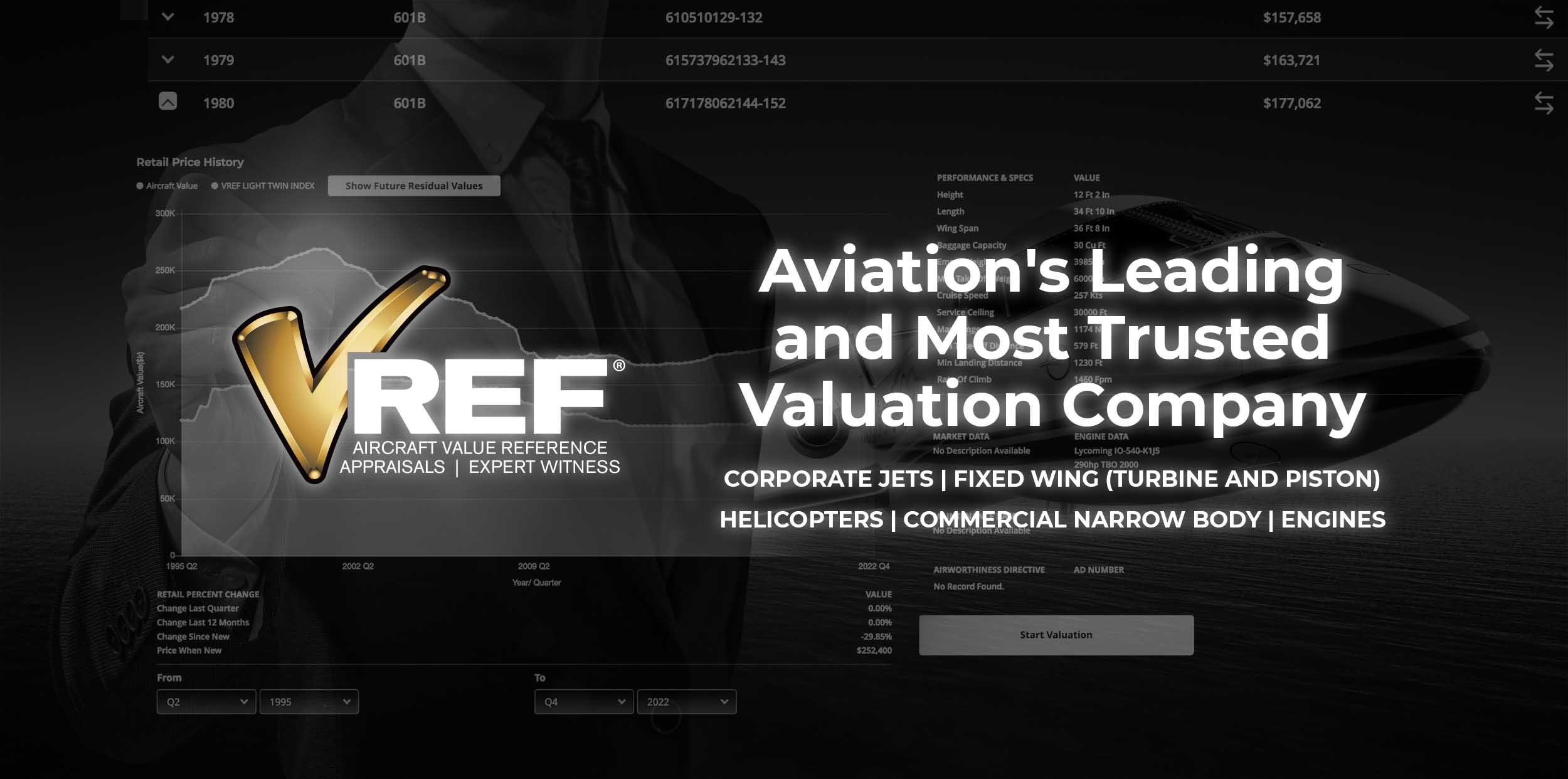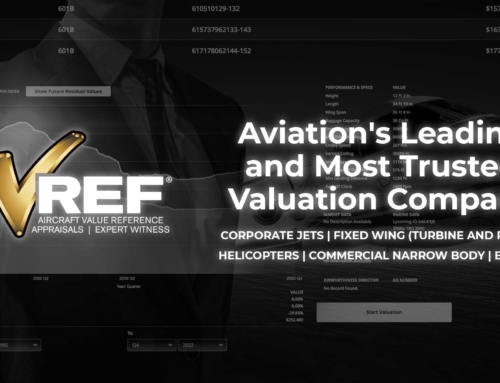Aircraft insurance costs, coverage, and requirements can vary widely, depending on the aircraft you plan on purchasing whether for yourself or your business. But having the right type of coverage for your aircraft is necessary for both your annual budget and peace of mind.
Ever heard any of these misconceptions about aircraft insurance and don’t know what to believe?
- I don’t need insurance if I’m not flying far
- My homeowner’s insurance covers everything
- Hull insurance always covers full aircraft value
- One policy fits all planes
Explore the ins and outs of aircraft insurance and what you may need to ensure proper coverage for your single-engine aircraft.
Don’t guess – know exactly what your aircraft is worth. A professional appraisal ensures accurate valuation, helping you secure more precise and appropriate insurance coverage. Contact VREF for aircraft appraisal services.
Do You Legally Need Aircraft Insurance?
There is no federal law that requires aircraft owners to have aircraft or liability insurance. However, you’ll find it nearly impossible to secure financing, maintain aircraft value, or even obtain hangar space without it. You should also keep in mind that some states like California and Connecticut do have their own legal requirements for aviation liability insurance.
From incidents involving parked vehicles and wildlife to devastating natural disasters and avoiding litigation, proper aircraft insurance coverage protects your assets and future flying experience.
5 Types Of Aircraft Insurance Coverage To Consider
Excluding optional coverages including loss of use, rental reimbursement, and hangar coverage, these are 5 types of coverage to consider in aviation.
1. Passenger Liability Insurance
Lawsuits don’t care about operating categories. This is why passenger liability isn’t optional when you’re serious about protecting your asset(s) and reputation. If someone gets injured on board, this is the coverage that steps in. It’s typically required for commercial and charter operations but has become more popular among owners flying under Part 91.
2. Public Liability Insurance
Public liability insurance is your foundational layer that covers damage your aircraft causes to third-party property such as airport structures, vehicles, or someone else’s hangar. It’s required in most jurisdictions, but be clear: it won’t cover your aircraft or your passengers.
3. In-Flight Insurance
If you want full-spectrum protection, in-flight insurance is your go-to. It covers your aircraft whether it’s flying, taxiing, or tied down. It’s typically more expensive, but if you’re looking for peace of mind and value retention, this is where to start.
4. Ground Risk Hull Insurance (Not In Motion)
When not in motion, a ground risk hull insurance policy protects your aircraft while it’s parked. Whether the aircraft is impacted by a windstorm, fire, or structural failure in the hangar, this insurance keeps your investment covered when it’s not under power.
5. Ground Risk Hull Insurance (In Motion)
Ground risk hull coverage applies when the aircraft is moving on the ground, including during taxiing or towing. This type of coverage insures the entire plane, not just the hull.
Need an accurate representation of the value of your aircraft? Partner with an ASA Accredited Senior Appraiser to get started.
Factors That Affect Insurance Premiums
Anything can happen to your aircraft, which is why it helps to know what to look for and expect from your coverage, just in case. Having inadequate coverage can be the difference between getting timely, cost-effective repairs and having to scrap your aircraft completely.
Aircraft insurance isn’t one-size-fits-all. This means carriers must look at a wide range of variables to assess risk and determine your premium with factors including:
- Pilot experience and certifications
- Aircraft age, model, and value
- Operational use
- Storage and location
- Claims history
- Safety equipment and modifications
Pilot Experience & Certifications
Total time, time-in-type, training recency, and ratings can all impact how underwriters evaluate risk. More experience and advanced training usually mean lower premiums.
Aircraft Age, Model & Value
Newer aircraft with advanced safety technology may be cheaper to insure than aging models with higher maintenance risks. Also, hull value directly impacts the policy’s cost.
Operational Use
Whether the aircraft is used for personal travel, training, or business affects your risk profile. Commercial or instructional use often triggers higher premiums due to increased exposure to inexperienced pilots, repetitive maneuvers, and dual control usage.
Storage & Location
An aircraft stored in a climate-controlled hangar in a low-risk area will likely cost less to insure than one kept outside in a region prone to severe weather. Water, humidity, and salt can all heavily deteriorate aircraft – even more so when exposed for long periods of time.
Claims History
A clean claims record signals lower risk to insurers. Frequent or recent claims, on the other hand, can drive up premiums or limit your coverage options. Working with a reputable broker can help you navigate complex policy terms and secure the right coverage at the best possible rate.
Safety Equipment & Modifications
You may be able to lower your rates with enhanced avionics, onboard de-icing, engine monitors, or auto-land systems.
Ultimately, underwriters must weigh the probability and potential cost of a loss. The more data that points to safety, reliability, and risk mitigation, the more favorable your premium will be. Start your search for insurance strong by getting an aircraft appraisal you can count on.
Tips For Getting The Best Coverage & Rate
Secure optimal coverage at a competitive rate by working with an aviation insurance broker who understands your aircraft and travel needs. In addition to maintaining a clean claims history and staying current on pilot training, you should also document as much as possible – keeping your logbooks up to date and stored securely.
You can also take certain measures for your aircraft to secure better coverage.
- Hangar your aircraft when possible to minimize exposure
- Invest in safety upgrades like ADS-B or fire suppression systems
- Be transparent during the underwriting process
Insurers account for proactive measures taken, so the more you do, the better your chances are at locking in proper coverage at a better price. You might even have the option to bundle with other aviation-related policies.
What To Expect In The Event Of A Claim
Generally, claims for aircraft include reporting, inspection, and an adjuster review. This is why the importance of documentation cannot be emphasized enough as you go about your travels.
Keep everything you can from photos, pilot logs, and maintenance records in case you ever truly need them. You can resolve many potential coverage disputes with proper documentation. The faster you can provide what’s needed for the adjuster to process your claim, the sooner you can expect a payout, if applicable.
Compare insurance quotes annually as not all policies are equal. You don’t want to be stuck overpaying for coverage that you don’t need. And you don’t want to skimp on the coverage you should have to better protect your passengers, aircraft, and your assets.
Connect with the experts to start the appraisal process.
NOTE: VREF Verified Reports are not USPAP compliant and should not be used in place of a formal appraisal for financing, estate, legal, or insurance purposes.




